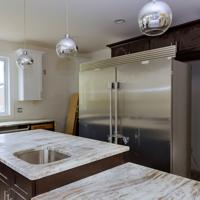In recent years, smart home technology has quietly made its way into many of our lives. It's an exciting blend of convenience and innovation, offering subtle improvements in the ways we interact with our living spaces. Rather than promising a complete revolution, smart home integration is a journey toward enhanced comfort, energy efficiency, and simplicity.
Understanding Smart Home Integration
At its core, smart home integration refers to connecting various devices and systems within your home to work together seamlessly. This might include your lighting, heating, entertainment systems, and security devices. The goal is for these technologies to communicate with each other and allow you to control them effortlessly from a single device, often via a smartphone or dedicated hub.
Key Components of a Smart Home
Smart Lighting: One of the most accessible entry points into smart home technology, smart lighting allows you to control your lights remotely. Brands like Philips Hue and LIFX enable you to customize brightness and color, set schedules, and create lighting scenes suitable for different activities.
Smart Thermostats: Devices like the Nest Learning Thermostat adjust the temperature of your home based on your habits. They learn your schedule over time, helping to enhance comfort while potentially reducing energy usage.
Smart Security Systems: These systems often include surveillance cameras, smart locks, and motion detectors. Brands like Ring and Arlo have made it simpler to keep an eye on your home, whether you're inside or miles away.
Smart Speakers and Displays: Systems like Amazon Alexa, Google Nest Hub, and Apple HomePod allow verbal interaction with your smart home. These devices act as central hubs, enabling voice control over the connected devices in your home.
Smart Appliances: Many modern appliances, from refrigerators to washing machines, now come with smart features. They might notify you when your laundry is done or suggest recipes based on the contents of your fridge.
Moving Toward Integration
The beauty of smart home technology is its flexibility. You don't need to dive in all at once. Begin with a single device or system that meets a specific need. As you become more comfortable, you can add more devices over time.
Consider platforms like Apple HomeKit, Amazon Alexa, or Google Assistant. They each offer ecosystems that can integrate multiple devices from different manufacturers. Research and compatibility checks are key—ensuring that the devices you choose can communicate effectively within your chosen ecosystem.
Practical Examples
Imagine coming home on a chilly evening. As you approach, your smart thermostat has already warmed the house to your preferred temperature. Inside, the lights switch on gently in the hallway and living room.
Maybe you're cooking dinner. The smart speaker in your kitchen lists recipe instructions step-by-step, hands-free. Meanwhile, the dishwasher notifies you via your smartphone that it's time for maintenance.
Considerations and Challenges
Smart home integration is not without its challenges. There’s a learning curve, and inter-device compatibility can sometimes be an issue. Additionally, privacy and security concerns should be considered, as with any internet-connected technology.
Before diving in, spending some time researching and, if possible, testing devices can mitigate many potential issues. Reading user reviews and consulting resources can provide insights into what might work best for your situation.
Conclusion
Smart home integration offers a path, not to a perfect future, but to a more connected and comfortable living environment. Each step toward integration is an opportunity to make life a little easier and your home a tad more welcoming.
I invite you to explore this technology, start small, and find what enhances your day-to-day experience. The journey toward a smart home can be as rewarding as the destination itself.



